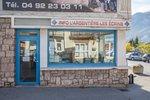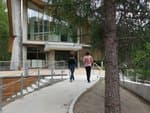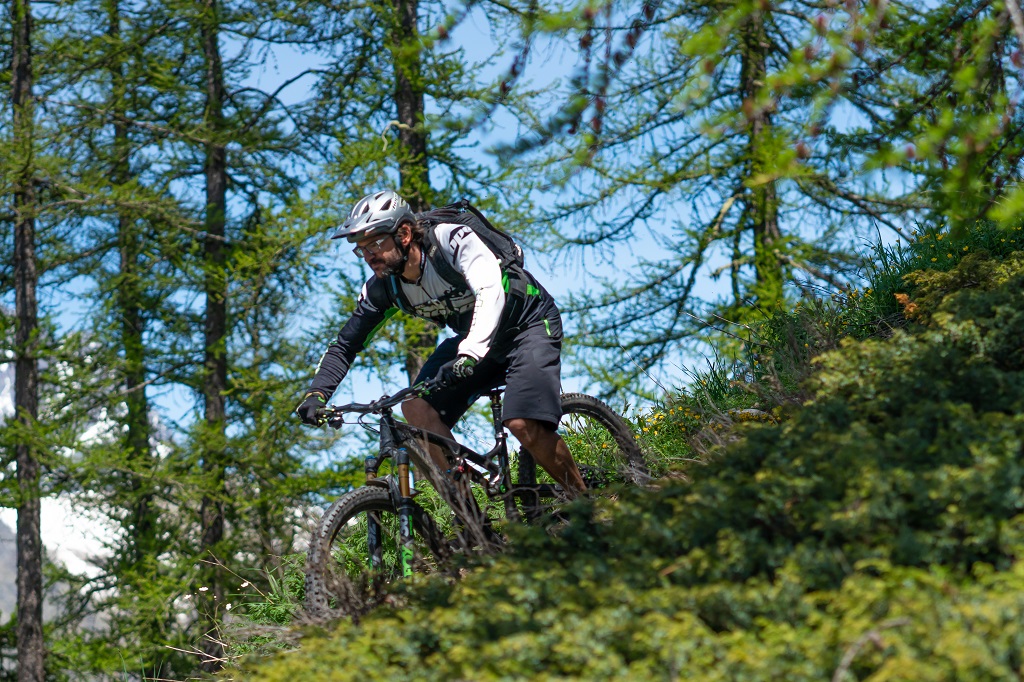
Le Lauzet (no. 11)
Description
The circuit starts not far from the La Roche-de-Rame mayor's office ("Mairie") near the Bouchouse mountain stream. First, follow its left-hand bank, going upstream. 430 metres further up, cross the mountain stream and carry on along the right-hand bank. At the crossroads, turn right to cross the mountain stream again and carry on uphill towards Bel Pinet.
- Turn left towards Le Lauzet, winding uphill along a stony track
- When you come to Bel Pinet, at 1,400 m, head along the track on the right leading to Le Gorgoras, Le Clot du Villaron and Le Lauzet, passing near the pink marble quarry ("Carrière du Marbre Rose"), a marble used in the construction of numerous buildings such as Gap Cathedral
- When you reach Le Lauzet, at 1,786 m, head left near the small lake to descend towards Bel Pinet via a different route
- Turn right onto a path to avoid the wide, twisting stony track, and follow this, crossing the track (Be sure to follow the waysigns and exercise caution: it is very stony terrain which makes some sections dangerous and technical)
- At the end of the path, head left onto the wide track and, after 300 metres, turn right to join a new path. This, too, is very technical. Continue to follow this path downhill, avoiding the wide track, until you come to the paved road at the Bouchouse hydroelectric power station and then on to your starting point
- Departure : La Roche-de-Rame mayor's office ("Mairie")
- Arrival : La Roche-de-Rame mayor's office ("Mairie")
- Towns crossed : La Roche-de-Rame
Altimetric profile
Recommandations
Rescue services contact details: Secours Montagne (Mountain Rescue): +33 (0)4 92 22 22 22 or 112
Take your litter home
Do not take shortcuts across pastureland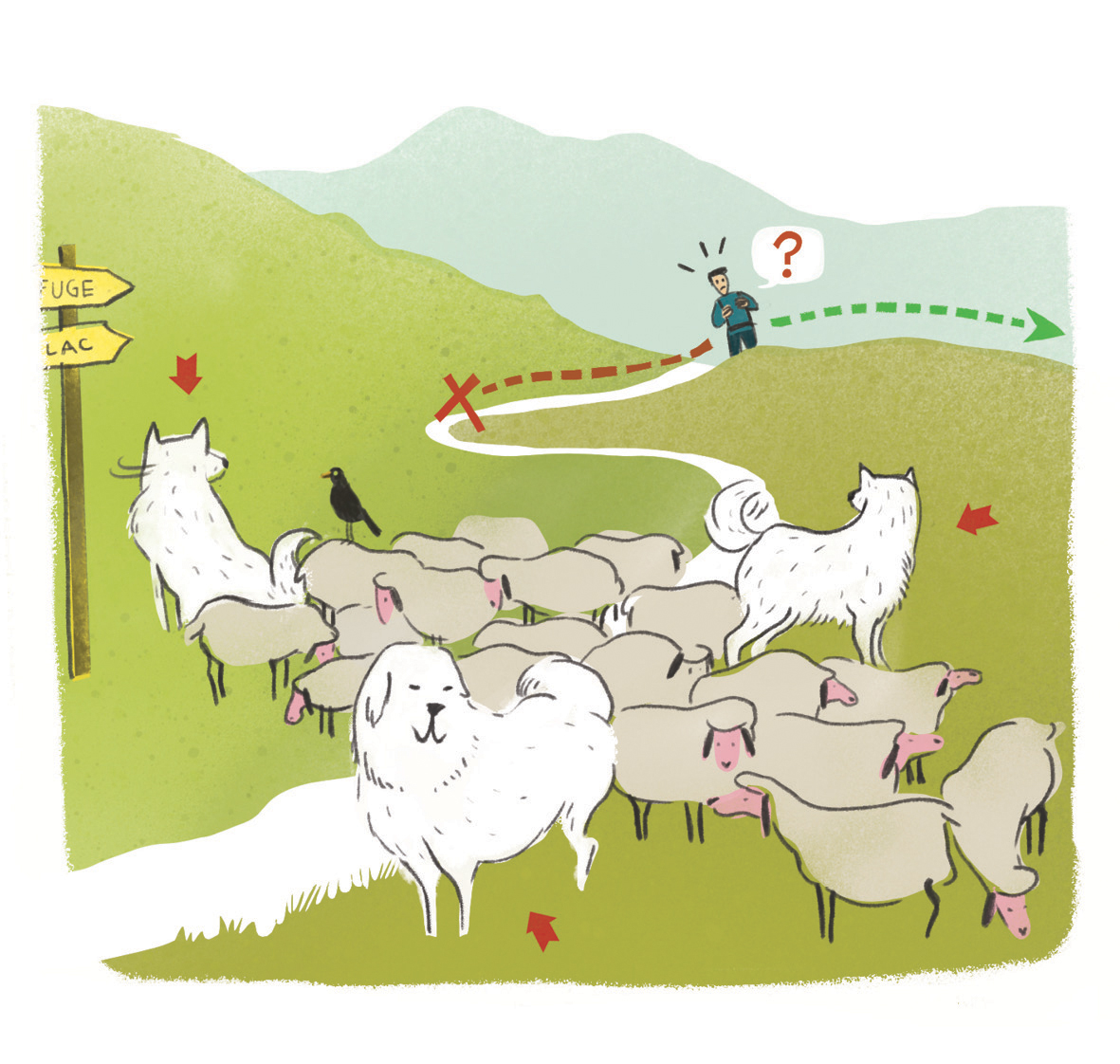 In mountain pastures, protection dogs are there to protect the herds from predators (wolves, etc.).
In mountain pastures, protection dogs are there to protect the herds from predators (wolves, etc.).
When mountain biking, I adapt my behavior by going around the herd, pausing and getting off the bike so the dog can identify me.
Find out more about the actions to adopt with the article "Protection dogs: a context and actions to adopt".
Tell us about your meeting by answering this survey.
Information desks
23 Avenue de la République, 05120 L'Argentière-La Bessée
Vallouise Park house
, 05290 Vallouise
Information, documentation, models, exhibitions, screenings, product sales and works of the Park. Guided tours for school, reservation required. The new Park House opened in Vallouise since June 1, and offers visitors an interactive permanent exhibition inviting to explore the area and its heritage. A temporary exhibition space will allow a renewed offer. Finally, the device is completed by an audiovisual room to organize screenings and conferences Free admission. All animations of the Park are free unless otherwise stated.
Transport
Public transport >> www.pacamobilite.fr
Consider car-sharing >> www.blablacar.fr
Access and parking
Parking :
Sensitive areas
Short-toed snake eagle
- Impacted practices:
- Aerial,
- Sensitivity periods:
- MarAprMayJunJulAugSep
- Contact:
- Parc National des Écrins Julien Charron julien.charron@ecrins-parcnational.fr
7 points of interest
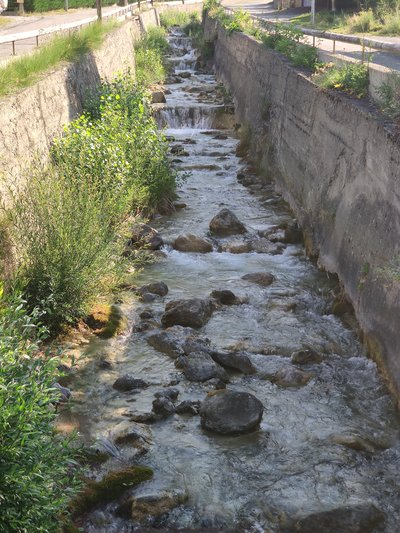
Torrent de Bouchouse - Office de tourisme du Pays des Écrins  Water
WaterBouchouse mountain stream
The Bouchouse mountain stream is fed by the Le Pansier and La Pisse mountain streams 1,900 metres above sea level. It crosses the municipality of La Roche-de-Rame, supplying it with water. This mountain stream then flows into the Durance below the municipality.
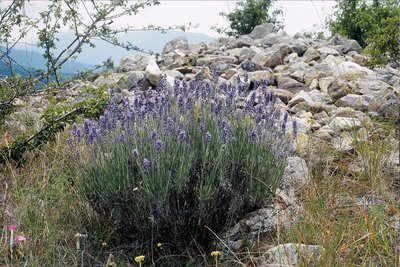
Lavande à feuilles étroites - Bernard Nicollet - Parc national des Écrins  Flora
FloraThe narrow-leaved lavender
The narrow-leaved lavender has greenish-grey leaves and violet flowers. It grows in sunny areas, a reminder that the Pays de Écrins is in the Southern Alps after all! Not to be confused with the lavandin, this plant naturally grows on rocky slopes in the mountains of the Midi. The word «lavender» is thought to come from the Latin "to wash". This etymology suggests that lavender was used at a very early date to perfume washing.
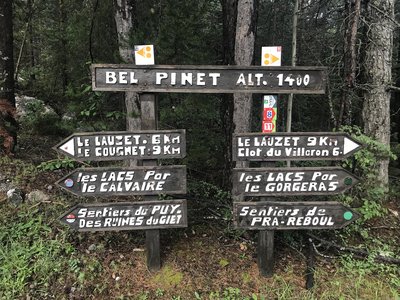
Bel Pinet - Office de tourisme du Pays des Écrins  History
HistoryBel Pinet
Bel Pinet stands at 1,400 metres above sea level in the Bouchouse valley, in the municipality of La Roche-de-Rame. Bel Pinet, or Bel-Pinet, designates the slopes under the rocky cliffs of the Oumbras. It was once irrigated by the Bel Pinet Canal, which suggests that it used to be cultivated and would therefore have been less wooded. The term "Pinet" simply means a place planted with pines (Pinus in Latin). So Bel Pinet means a beautiful place planted with pines, or a beautiful pine wood.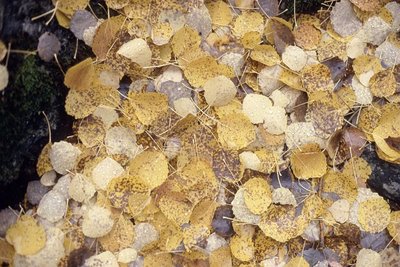
Daniel Roche - Parc national des Écrins  Flora
FloraThe aspen wood
Here, a wood of aspen trees, with smooth greenish trunks and round, crenulated leaves, adopt magnificent autumn colours. The petiole («tail») of aspen leaves is flat and twisted and can therefore be caught by the slightest breath of air. This has the effect of making the foliage tremble, hence its French name bois de tremble!
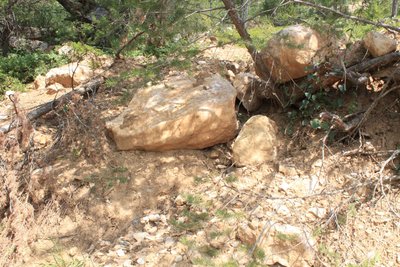
Marbre rose - Office de tourisme du Pays des Écrins  History
HistoryThe Pink Marble of Combe Mounière
In the nineteenth century, there were four quarries in La Roche-de-Rame. They exploited deposits of metamorphosed limestone which was pink in colour. One of these, the Combe Mounière quarry, produced stone which was used in particular in the construction of the new Cathedral of Saint-Arnoux in Gap, between 1866 and 1904. When exposed to the elements, the surface of the limestone takes on a grey patina.
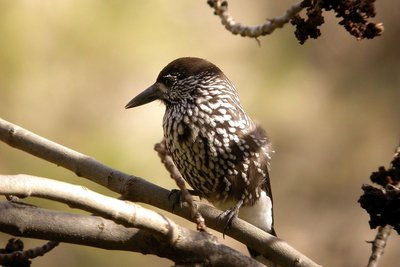
Cassenoix moucheté - Damien Combrisson - Parc national des Écrins  Fauna
FaunaThe spotted nutcracker
A harsh call sounds from the forest. A jay perhaps? No, a nutcracker, its cousin. With dark, white-spotted plumage, this bird's strong beak can break open hazelnuts (although not walnuts as suggested by its name in French, cassenoix (walnut breaker)) and in particular it can dissect Swiss pine cones in order to reach the pine nuts inside. It inhabits high forests. It buries Swiss pine nuts in the ground to store up food for the winter. When winter comes, it will find the pine nuts again even under a thick layer of snow. Those it forgets will germinate.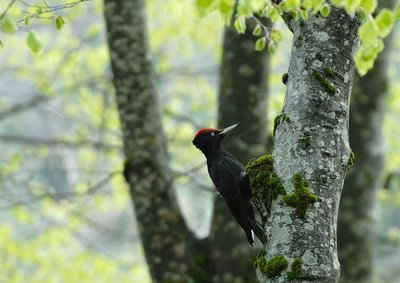
Pic noir - Coulon Mireille - Parc national des Écrins  Fauna
FaunaThe black woodpecker
The biggest bird of the woodpecker family, its shape is perfectly adapted for life in the trees. It can easily be identified by its overall black colour with a bright red cap extending from the forehead to the back of the neck in the male, and just a red mark in the female. It lives in tree-covered areas, which it needs for its food and for its nesting method. It feeds mainly on ants and insects which it extracts by drilling into the back with its sharp beak.
Source

Report a problem or an error
If you have found an error on this page or if you have noticed any problems during your hike, please report them to us here:

